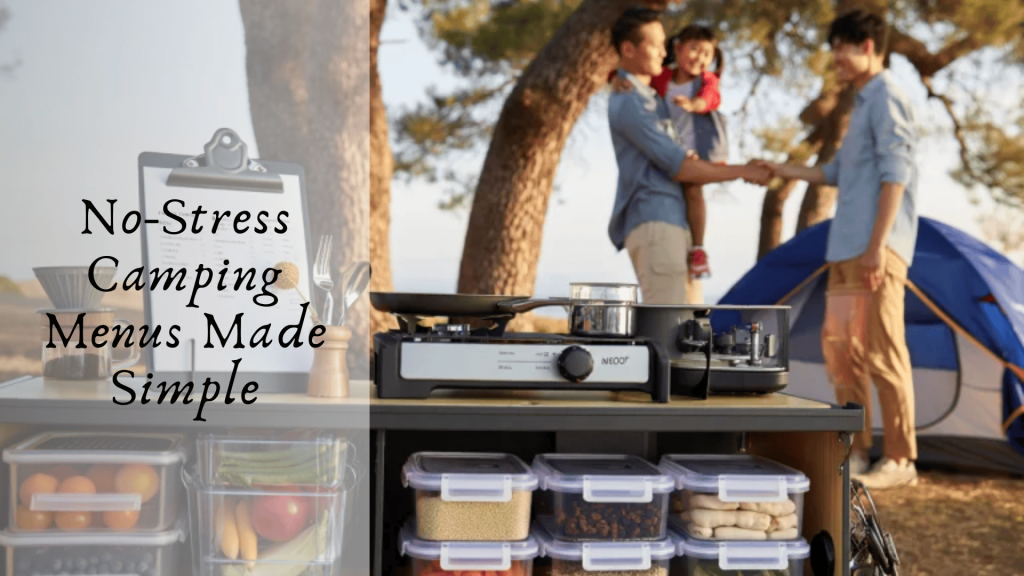Tired of camping trips with boring sandwiches or forgotten essentials? A smart camping menu planner transforms your outdoor eating from stressful to spectacular!
Most campers either pack too much (watching food spoil) or too little (going hungry when miles from the nearest store). Creating a tailored food plan means better meals with less waste and frustration.
You’ll save money by shopping strategically and enjoy more time relaxing instead of worrying about what to cook next. The right camping menu balances easy prep with satisfying flavors, keeping energy high for hiking, swimming, and exploring.
Ready to eat well under the stars? Let’s walk through planning perfect outdoor meals for your next camping getaway!
The 3-Step Formula to Plan a Camping Menu
Food makes or breaks your camping experience. Too little planning means hungry campers or eating the same thing every day. Too much planning can mean wasted food and stuffed coolers.
With this simple 3-step method, you can put together a camping menu that’s both tasty and practical without spending hours figuring it out.
This formula hits the sweet spot – giving you just enough structure to eat well without turning your trip into a cooking marathon.
The best part? This system works whether you’re going for a quick weekend trip or a week-long outdoor stay. It scales for solo trips or big family outings, and it helps you shop smart before you head out.
Let’s break down this practical approach to outdoor meal planning that keeps things simple, fun, and filling.
Step 1: Count Your Days, Meals, and Hungry Campers
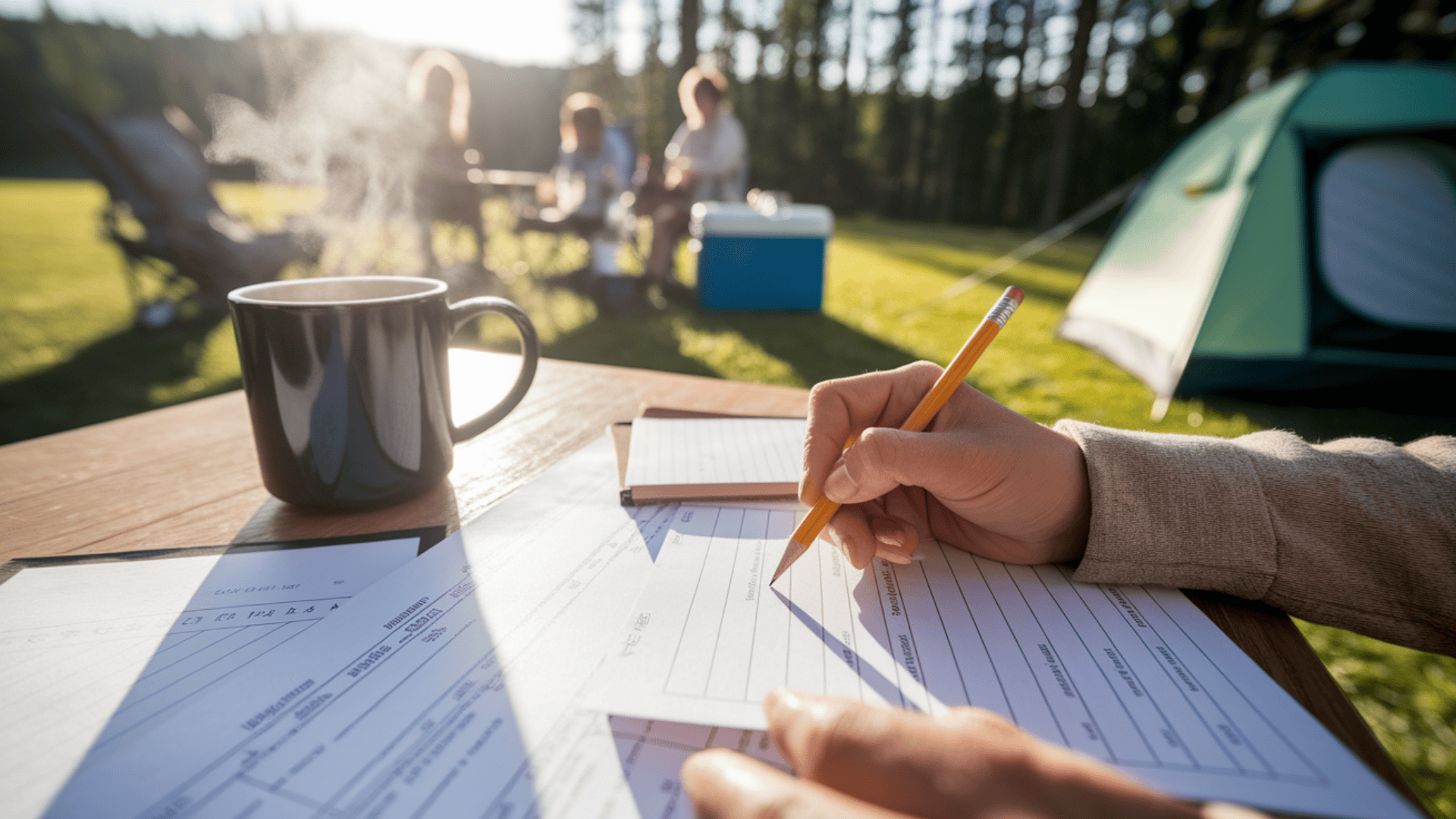
First, grab a piece of paper and jot down:
- Total number of days away
- How many breakfasts, lunches, and dinners you’ll need
- Number of people eating each meal
- Any snacks needed between meals
This quick counting step helps you avoid buying too much or too little food, saving both money and space in your cooler!
Step 2: Mix Simple and Quick Meals
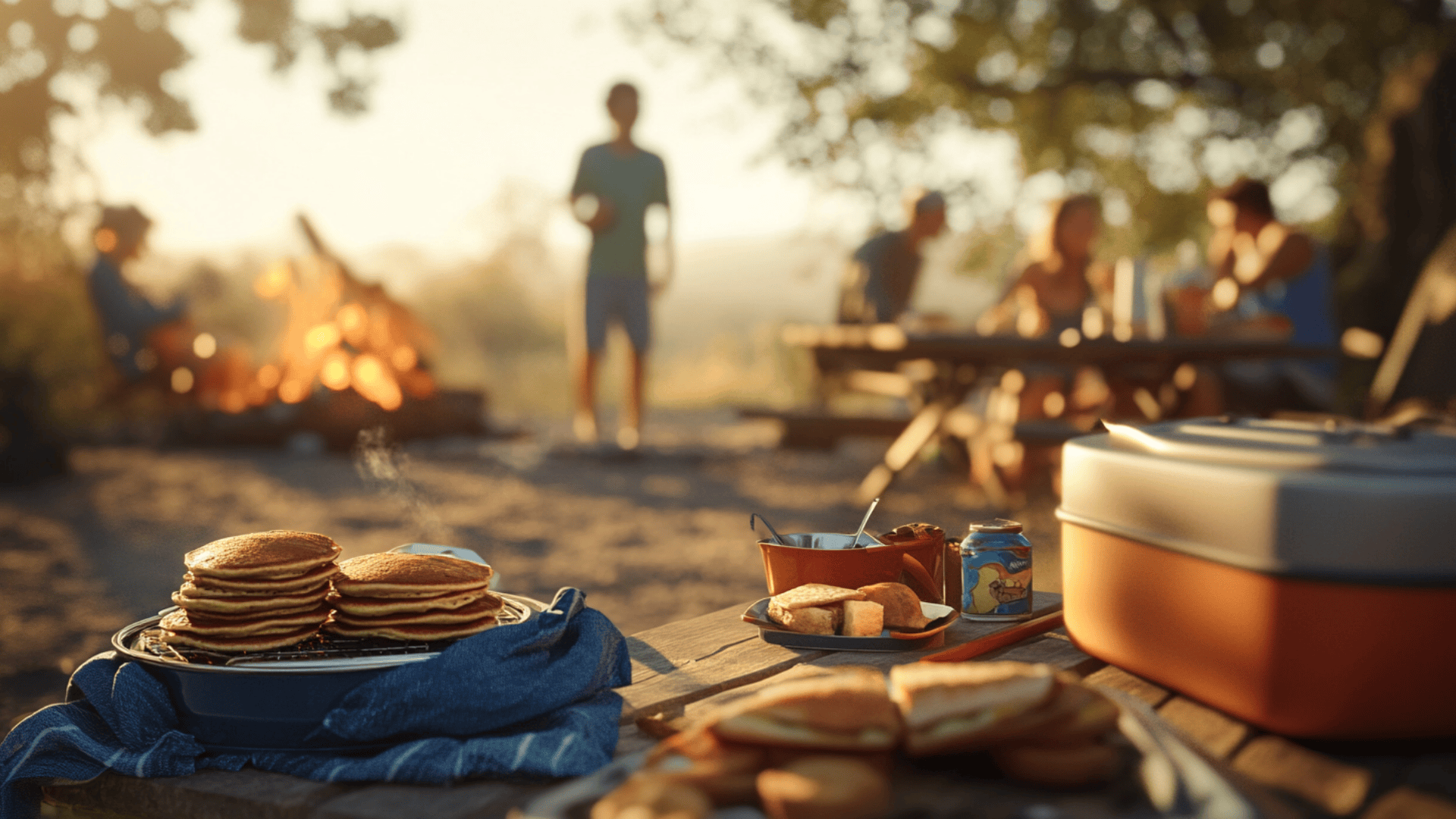
Balance is key when camping. Plan your meals with a mix of cooking intensity:
1. Morning: Maybe pancakes when you have energy.
2. Lunch: Simple sandwiches that need no cooking
3. Dinner: One-pot stew for a filling end to the day
Smart tip: Plan at least one no-cook meal per day. You’ll thank yourself when you’re tired from hiking or swimming!
Think about cooking time and cleanup, too. Some days, you’ll want to spend more time enjoying nature and less time cooking. Other days, making a more involved meal might be part of the fun.
Step 3: Use a Simple Grid System
Create a handy chart like this:
| DAY | BREAKFAST | LUNCH | DINNER | SNACKS |
|---|---|---|---|---|
| Friday | Oatmeal packets | Wraps with ham | Foil packet fish | Trail mix |
| Saturday | Egg scramble | PB&J sandwiches | Hotdogs | Fruit & nuts |
| Sunday | Cereal with milk | Tuna on crackers | Burgers | Chips |
Having your plan written down makes shopping so much easier. You can check your pantry against what you need, buy exactly the right amounts, and avoid those “did we pack the…” moments.
Bonus tip: Mark meals that can be made ahead with a star, and pack them first for easy access.
Easy Meal Ideas For Your Camping Trip
Not sure what to pack for each meal? Here are some tried-and-true options that work great in outdoor settings. These suggestions mix easy prep with satisfying results, perfect for outdoor cooking.
Breakfast Ideas
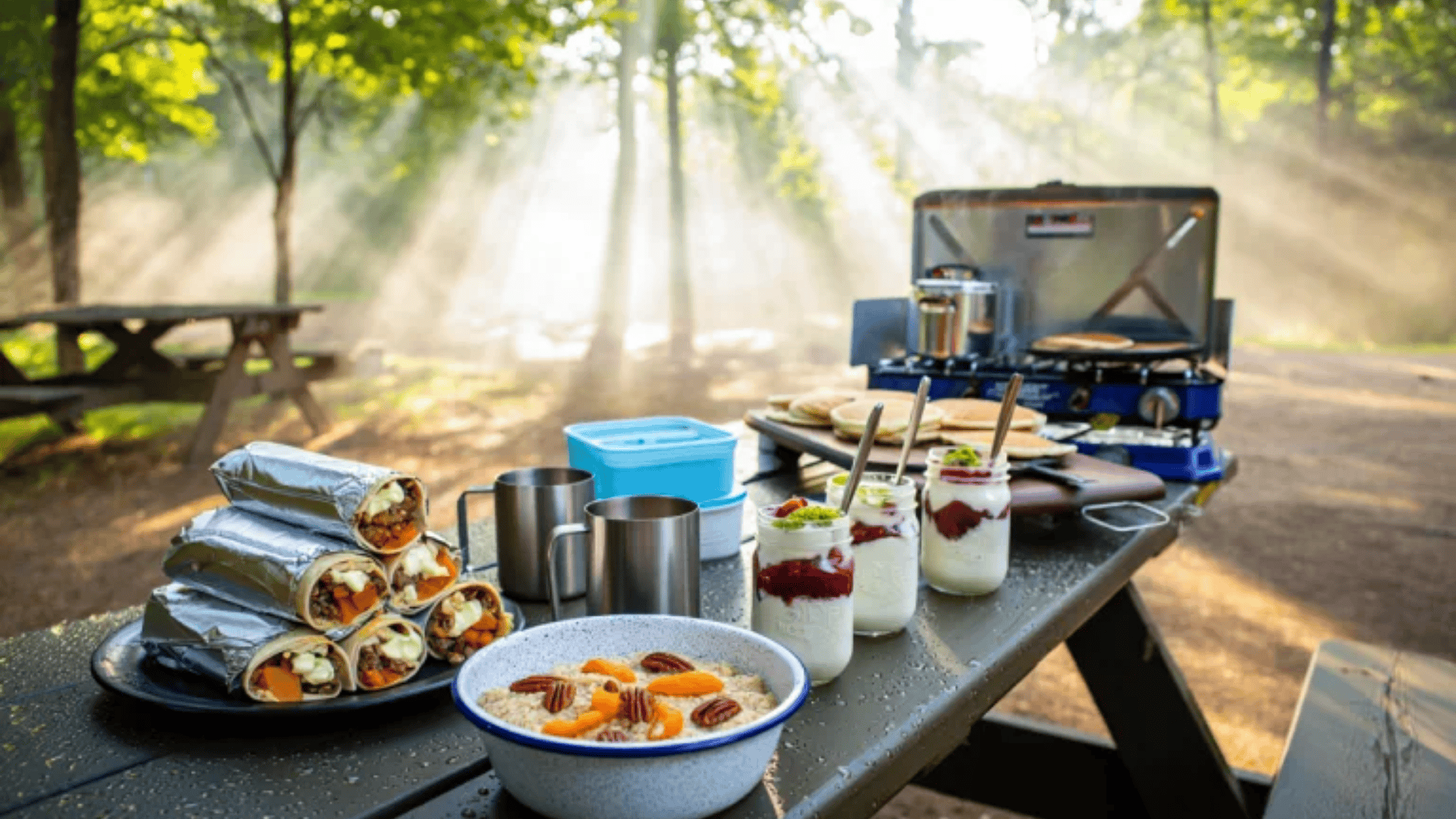
Start your day with filling meals that power your outdoor fun. From quick fixes to more involved morning treats, these choices keep everyone happy.
- Instant oats with dried fruit and nuts (quick and filling)
- Griddle pancakes with syrup (pre-mix the dry stuff at home)
- Breakfast burritos (can be made ahead and warmed up)
- Yogurt and granola cups (no cooking needed)
- Bagels with cream cheese or peanut butter (simple but satisfying)
The key to good camp breakfasts is preparation. Measure and mix dry ingredients at home, crack eggs into sealed containers, and bring pre-cooked bacon or sausage that just needs warming.
Lunch Tips
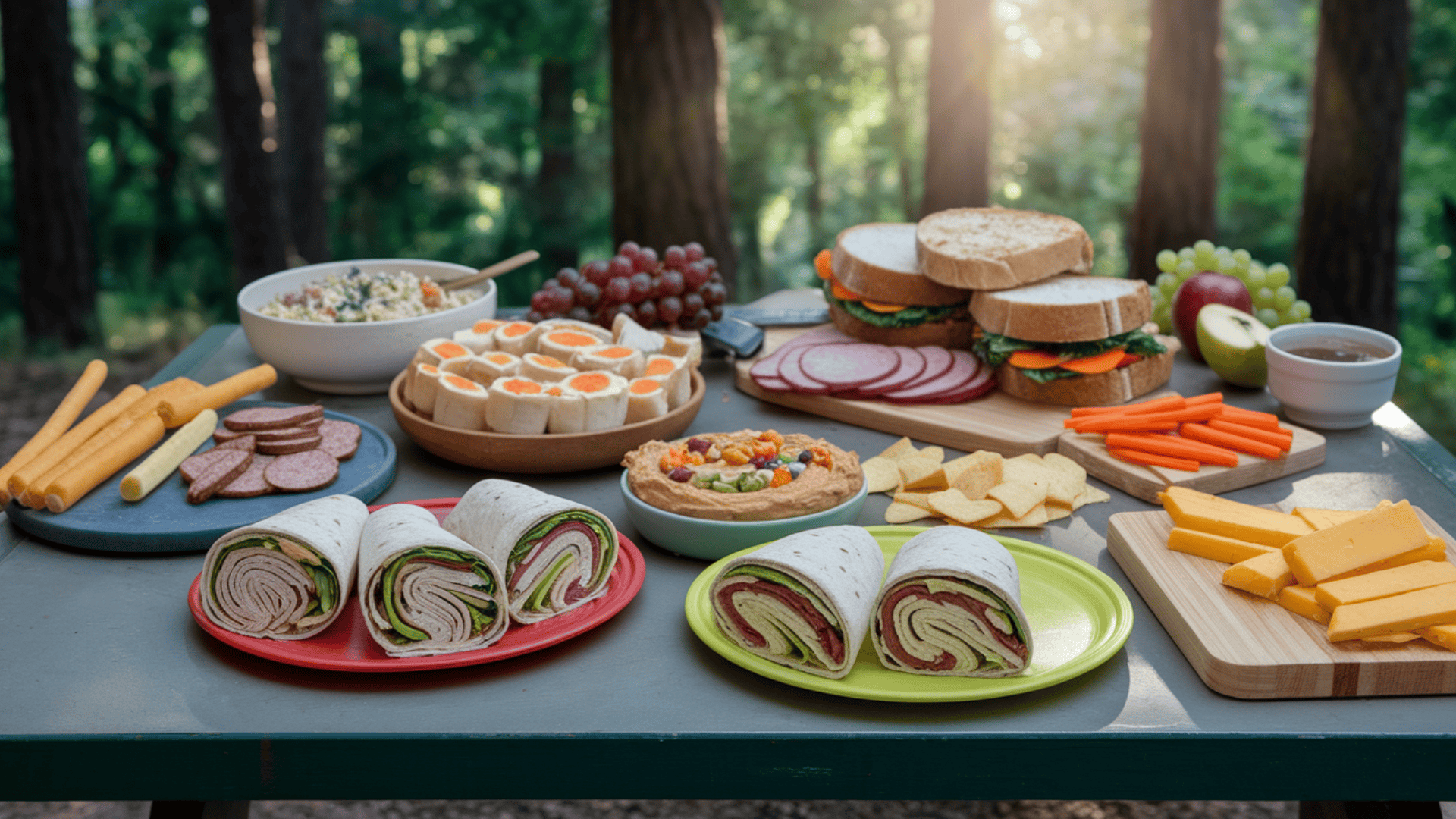
Mid-day meals need to be quick and filling. These options work well when you’re active or away from camp.
- Prep-ahead wraps make mornings easier – just assemble before heading out for the day. Fill them with combinations like turkey and cheese, hummus and veggies, or peanut butter and banana.
- A build-your-own sandwich bar with various breads, proteins, and toppings gives everyone choices. This works especially well for groups with different tastes.
- For hiking days, pasta salad made before the trip needs no preparation at the campsite – just scoop and eat.
- Don’t forget the power of simple finger foods: hard-boiled eggs, cheese sticks, chips, carrot sticks, and fruit make a perfectly good lunch without any cooking.
Sometimes, the simplest meals are the most practical when you’re enjoying the outdoors.
Dinner Inspiration
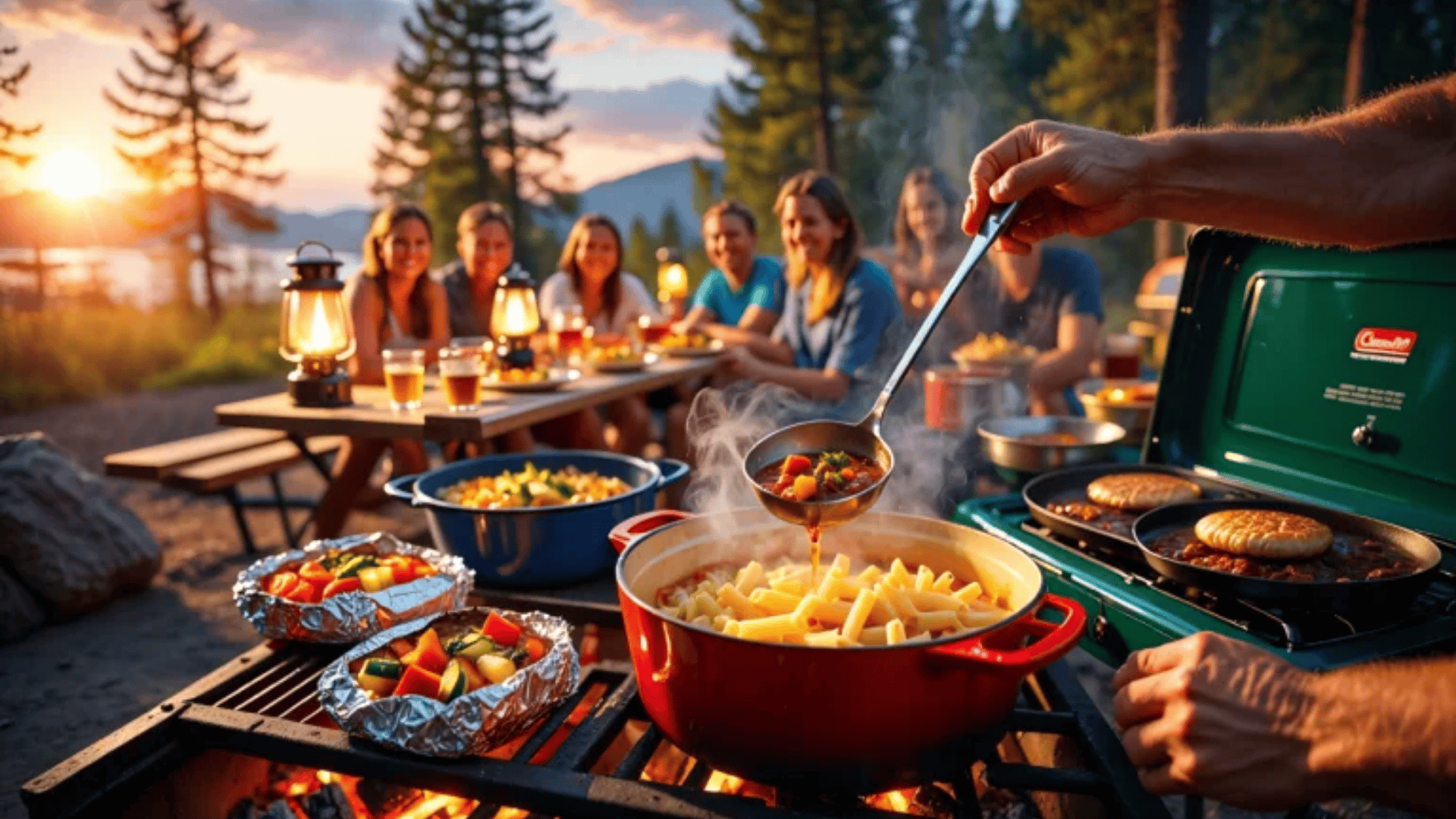
Evening meals bring everyone together. Focus on simple, filling foods that reward a day of outdoor play.
- One-pot pasta meals (add protein and veggies to boiling pasta for the last few minutes)
- Foil packet dinners (fish, chicken, or sausage with veggies)
- Mountain House freeze-dried meals (for quick nights)
- Chili or stew (make ahead and reheat)
- Burgers or hot dogs (classic for a reason!)
Dinners are worth a bit more work – they’re when everyone sits down to share stories from the day’s fun. Focus on meals where you can prep ingredients ahead, cook everything in one pot or pan, and clean up quickly.
Menu Templates for Different Camping Styles
Every camping trip has its own style. A weekend trip needs a different approach than a week-long stay. Use these templates as starting points, then customize them for your group’s tastes and needs.
1. Family-Style Basecamping (7-Day Plan)
When you’re staying put for a week, you can bring more food and plan some fancier meals. This approach works well when you have a cooler, full kitchen setup and aren’t changing campsites daily.
| DAY | BREAKFAST | LUNCH | DINNER | SNACKS |
|---|---|---|---|---|
| Monday | Pancakes | Sandwiches | Taco night | Chips & salsa |
| Tuesday | Cereal | Wraps | Pasta & sauce | Fruit |
| Wednesday | Eggs & bacon | Picnic lunch | Foil packets | Trail mix |
| Thursday | Oatmeal | Leftovers | Burgers | Popcorn |
| Friday | French toast | Cold cuts | Chili | Crackers & cheese |
| Saturday | Breakfast burritos | Tuna salad | Hot dogs | Cookies |
| Sunday | Cereal | Grab-and-go | One-pot meal | Mixed nuts |
With a week-long trip, you can plan for leftovers too. Tuesday’s extra pasta can become Thursday’s pasta salad. Extra taco fixings work well in breakfast burritos. Smart planning means less waste and more variety.
2. Quick Weekend Warrior Template (3-Day Plan)
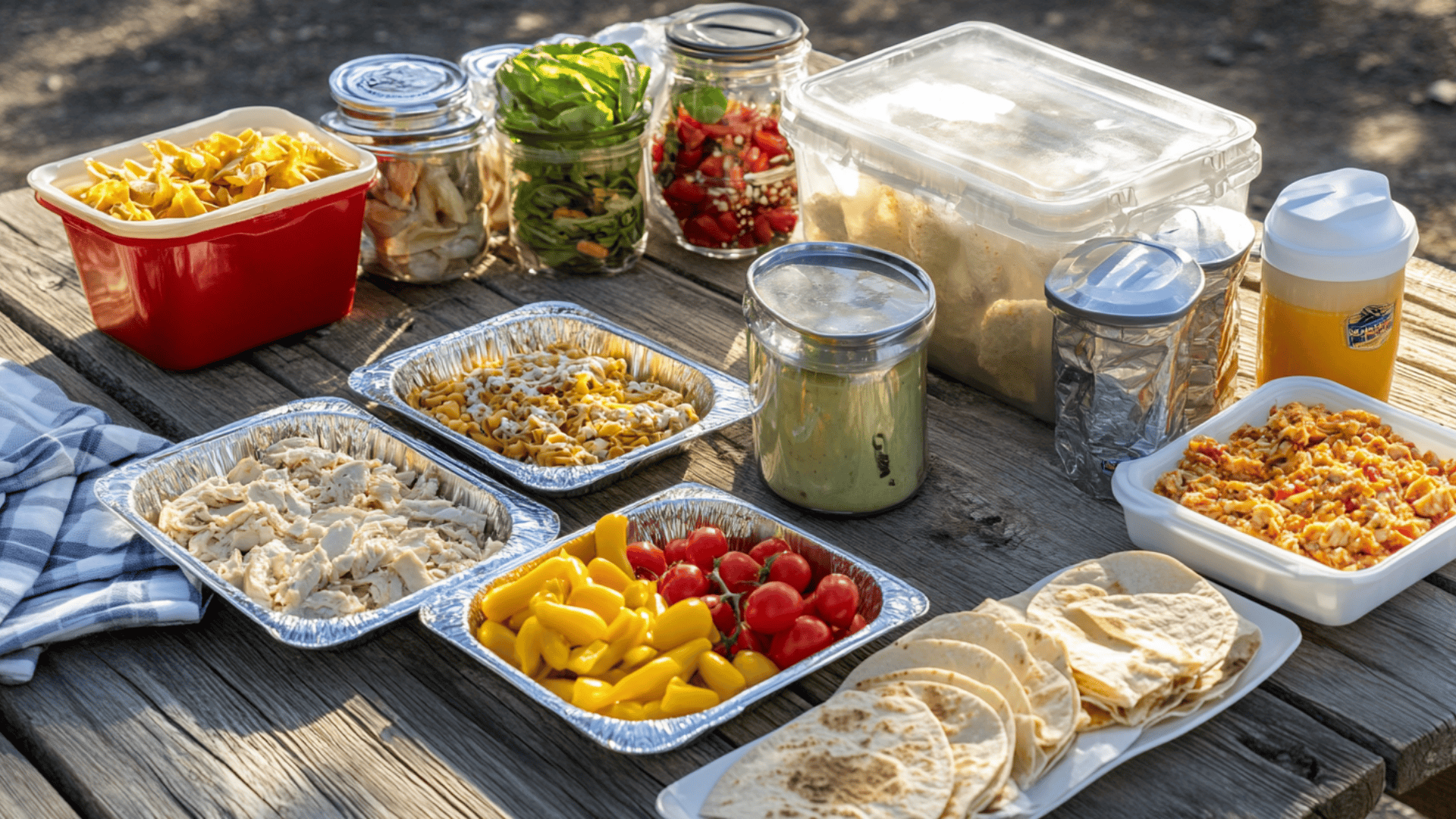
Weekend trips need simple, fast meal plans. This template keeps things light and easy:
Day 1 (Friday): Bring dinner from home, pack easy breakfast options.
Day 2 (Saturday): Focus on one hot meal (dinner) with simple lunch options.
Day 3 (Sunday): Use up leftovers and pack food that travels well for the trip home
Consider foods that serve multiple purposes – tortillas can be breakfast burritos, lunch wraps, and dinner quesadillas. Cooked chicken can top breakfast eggs, fill lunch sandwiches, and complete dinner pasta. Smart ingredients do double or triple duty.
3. Backpacking Light Menu
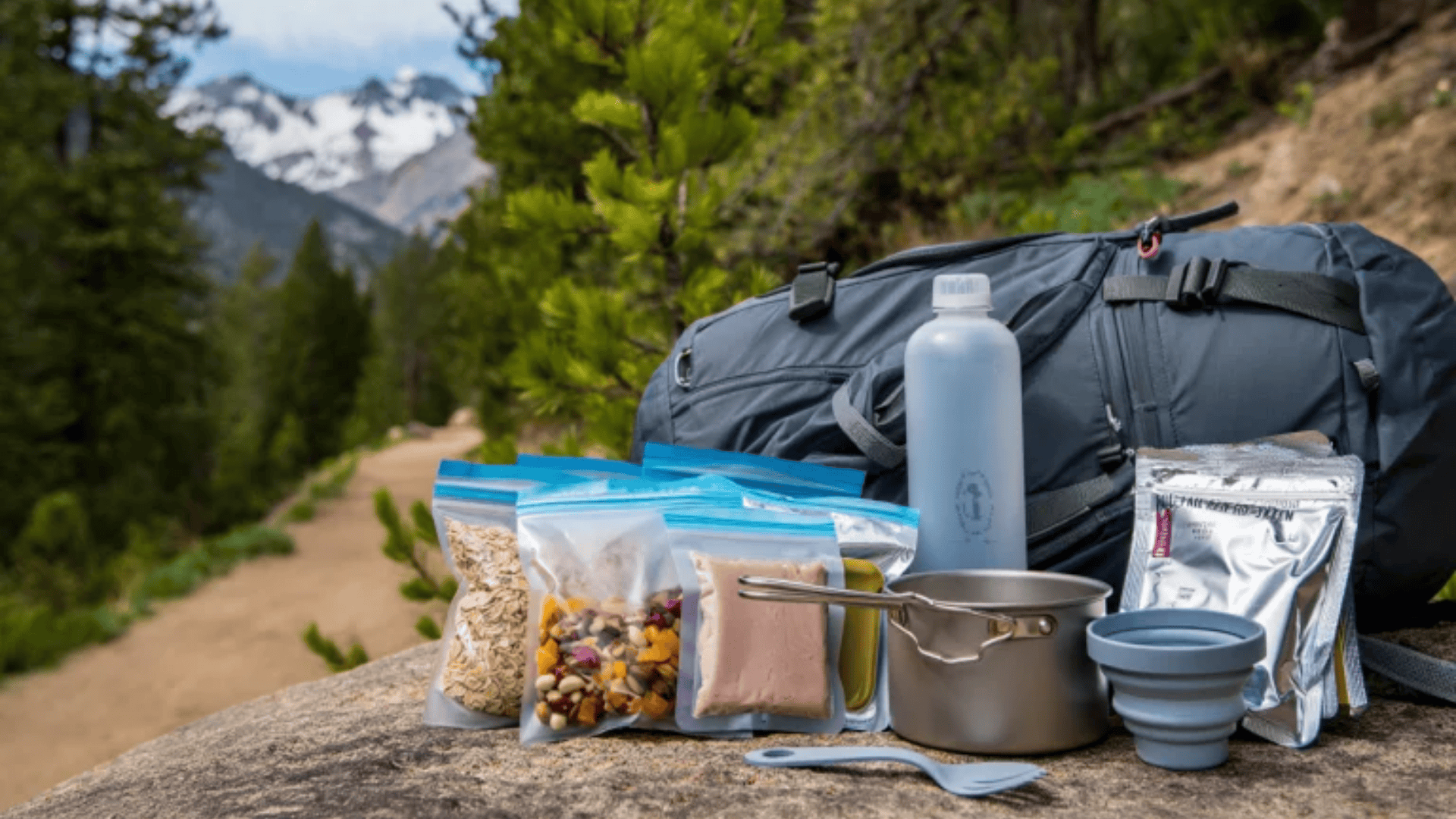
When weight matters, focus on these principles:
- High calories per ounce – nuts, dried fruit, jerky, chocolate
- Minimal cooking equipment needed – one pot wonders
- Foods that only require adding hot water – instant meals, couscous, oatmeal
- Shelf-stable in all temperatures – avoid items that melt or spoil easily
Backpackers need to balance weight, nutrition, and taste. Pre-portioning everything saves space and weight – use small zip bags for single servings of oatmeal, trail mix, and drink mixes. Vacuum-sealed pouches of tuna or chicken add protein without refrigeration.
4. Group & Kid-Friendly Rotation
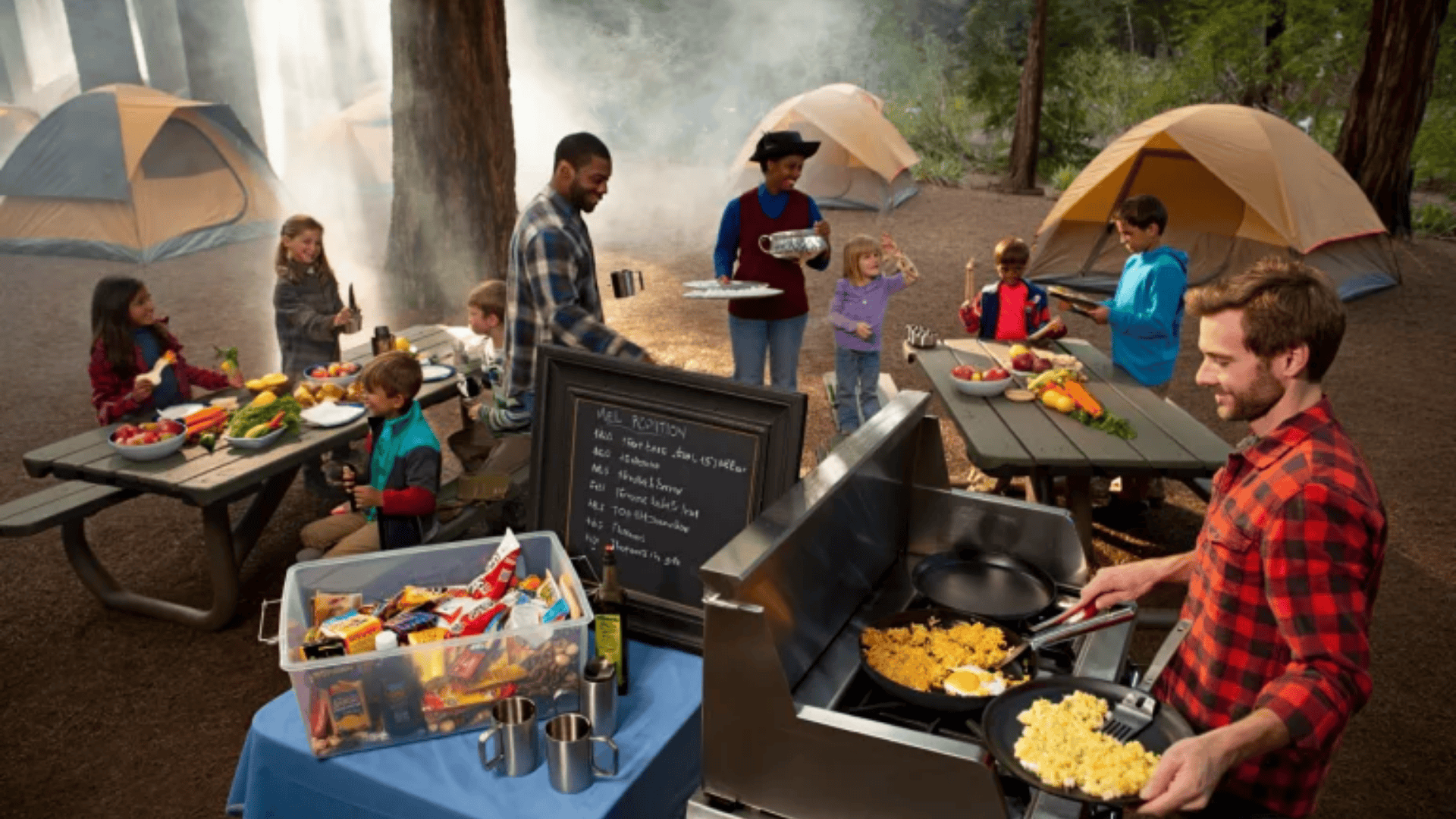
For group trips, share the workload by assigning meal responsibilities:
- Create a sign-up sheet for breakfast, lunch, and dinner slots
- Each family/person handles their assigned meals
- Keep a communal snack bin everyone contributes to
- Share common ingredients like condiments, spices, and cooking oil
This approach spreads out for both the work and the food cost. It also adds variety – everyone brings their camping specialties. Just make sure to coordinate ahead of time to avoid duplicate meals or excessive equipment.
Grocery Checklist Breakdown by Category
Organize your shopping trip by focusing on these key categories. A well-planned list saves time at the store and prevents forgotten essentials.
- Proteins: Eggs, canned tuna, chicken packets, hot dogs, burger patties, beans, nuts
- Carbs: Bread, wraps, pasta, rice, cereal, granola, crackers
- Produce: Hardy veggies (carrots, bell peppers), fruits with peels, onions, and potatoes
- Dairy: Hard cheese, yogurt tubes, shelf-stable milk, and butter
- Snacks: Trail mix, granola bars, chips, dried fruit, popcorn
- Drinks: Coffee packets, tea bags, drink mixes, filtered water plan
- Basics: Salt, pepper, cooking oil, foil, zip bags
When buying food, consider whether bulk packing or portion prepping works better for your trip style and group size.
Items like trail mix, cereals, and pancake mix work well portioned into daily servings. Things like pasta, rice, and coffee might be easier to measure at camp.
How to Pack and Store Your Camping Food
The right packing approach keeps food fresh and accessible throughout your trip. Good food storage also protects against wildlife visitors and prevents waste.
Cooler Strategy
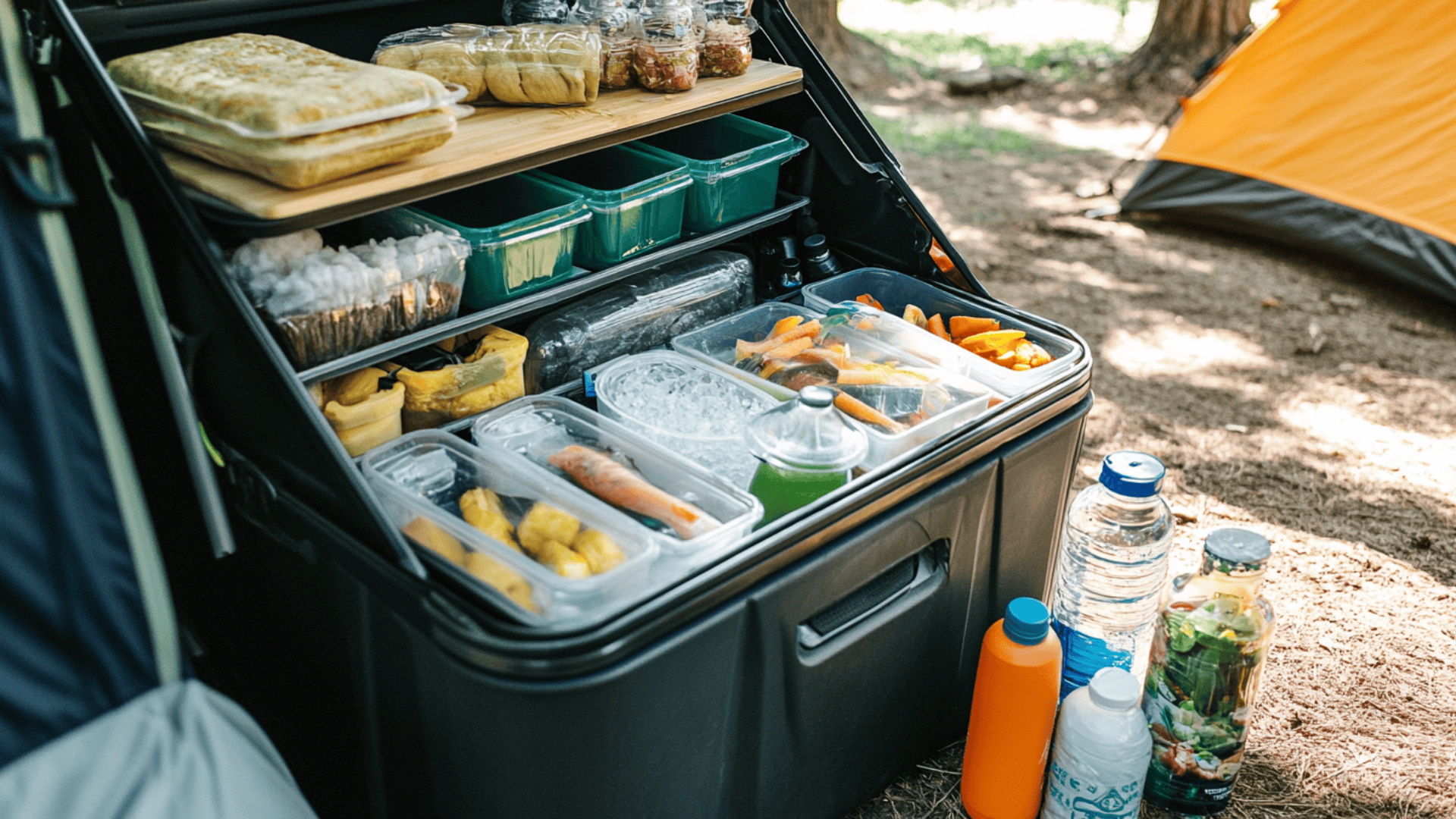
Use block ice instead of cubes for longer-lasting cold, and pack in layers:
- Top layer: First day’s food and drinks
- Middle layer: Days 2-3 meals
- Bottom layer: Last day’s food and extra block ice
Pre-chill your cooler by filling it with ice the night before your trip. This helps it stay cold much longer. Use frozen water bottles as additional ice packs – they’ll thaw for drinking water later in the trip.
Dry Goods Organization
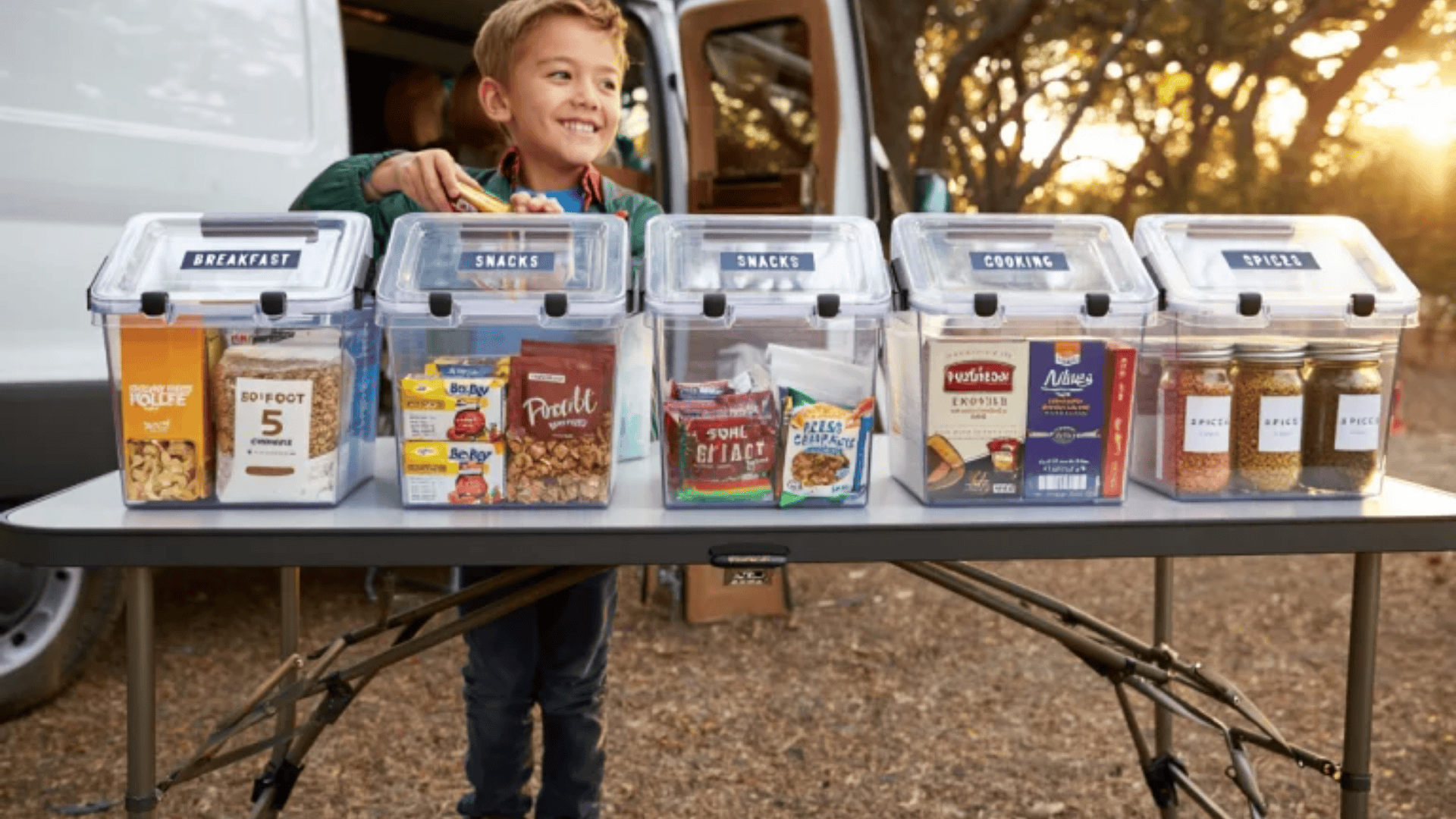
Store non-perishables in clear plastic bins with lids to keep out moisture and critters. Group similar items together for easy access – one bin for breakfast items, another for snacks, etc.
Label your containers clearly so everyone can find what they need. This especially helps when sending kids to grab something from storage. Clear boxes let you see contents without opening everything.
Pro tip: Pack a small container with your “cooking basics” – oil, salt, pepper, and a few key spices. This makes meal prep much simpler and prevents forgotten essentials.
Kitchen Setup and Must-Have Tools
A well-planned camp kitchen makes meal prep much easier. These essentials form the backbone of your outdoor cooking setup:
| CATEGORY | ESSENTIAL ITEMS | NICE-TO-HAVE |
|---|---|---|
| Cooking | Camp stove, fuel, skillet | Dutch oven, grill grate |
| Tools | Spatula, tongs, knife | Can opener, grater |
| Serving | Plates, cups, utensils | Serving spoons, bowls |
| Cleaning | Biodegradable soap, sponge | Drying rack, wash basin |
Setting up your camp kitchen in the same spot each time creates routine and efficiency. Choose a flat area away from tents but close to your eating area. Having water nearby helps with both cooking and cleaning.
Consider your cooking methods, too—will you use a camp stove, fire pit, or both? Each requires different tools and setup. A camp stove needs stable, level ground and protection from wind. Cooking over a fire requires grates or other supports, plus heat-resistant gloves.
Pro tip: Use color-coded bags to organize meals by day. This makes it easy to find what you need without unpacking everything. Clear plastic boxes work well too – you can see what’s inside without opening.
Fun Extras to Elevate Your Camping Menu
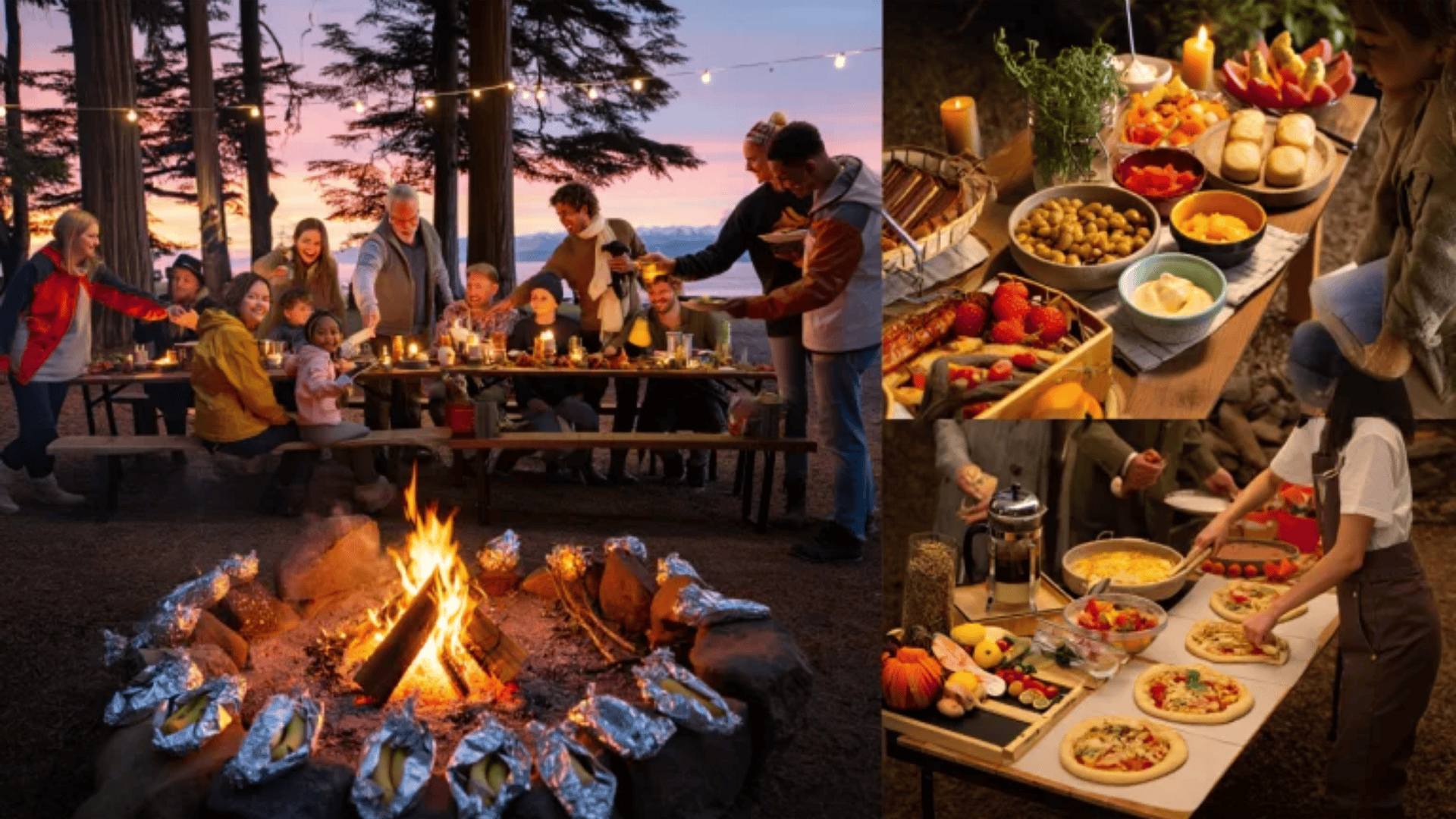
Turn ordinary camp meals into memorable experiences with these special touches. Food becomes part of the camping adventure with a little extra planning.
Let everyone build their perfect combination. Try banana boats (bananas filled with chocolate and marshmallows, wrapped in foil and heated) for a fun dessert alternative.
Plan one special meal for your trip:
- First night feast – something you prepared at home that just needs reheating
- Campfire pizza night using pre-made crusts or English muffins
- Last day brunch with special drinks and treats to celebrate the trip
- Birthday or anniversary meal if your trip includes a special date
Bring some fresh herbs in a damp paper towel inside a container – they add tremendous flavor to simple foods. Rosemary, thyme, and basil hold up well for a few days and make ordinary meals taste special.
Remember that camp cooking should be fun, not stressful. The best outdoor meals are the ones shared with good company under open skies! Sometimes, the simplest foods taste best after a day of outdoor activity.
That’s a Wrap!
The perfect camping menu isn’t about gourmet cooking—it’s about creating simple, delicious meals that fuel great memories.
Your camping menu planner serves as both a roadmap and a shopping guide, eliminating the stress of outdoor cooking. Take these templates, meal ideas, and storage tips on your next trip, and watch how smoothly mealtime flows.
Food tastes better in the fresh air after a day of adventure, especially when it’s well-planned and easy to prepare. The campfire becomes more than a cooking tool—it’s the heart of your outdoor experience, where stories are shared over satisfying meals.
Pack smart, cook simple, and savor those outdoor moments. Your future camping trips just got tastier!

